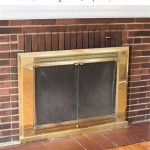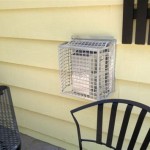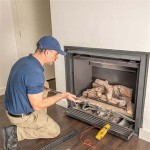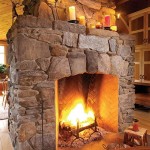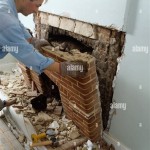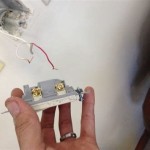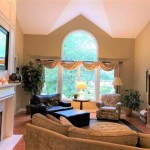Understanding High Heat Fireplace Paint: Protecting and Beautifying Your Hearth
Fireplaces offer warmth and ambiance, often serving as focal points in living spaces. However, the intense heat generated by a roaring fire can take a toll on the surrounding surfaces. Regular paint is not designed to withstand such extreme temperatures, leading to peeling, bubbling, discoloration, and even the release of potentially harmful fumes. High heat fireplace paint provides a specialized solution, formulated to endure the rigors of heat exposure while enhancing the aesthetic appeal of your fireplace.
This article delves into the characteristics, applications, and considerations surrounding high heat fireplace paint, aiming to provide a comprehensive understanding of this essential product for fireplace maintenance and renovation. We will explore what distinguishes it from conventional paints, where it can be safely applied, and how to choose the right product for your specific needs.
Key Differences Between High Heat and Regular Paint
The fundamental difference between high heat fireplace paint and regular paint lies in their composition and thermal resistance. Regular paints typically utilize acrylic or latex binders, which are susceptible to softening and degrading at relatively low temperatures. When exposed to the intense heat of a fireplace, these binders can break down, leading to paint failure. Furthermore, the pigments in regular paints may discolor or fade under high heat conditions.
High heat fireplace paint, on the other hand, employs specialized heat-resistant resins and pigments. These formulations are designed to maintain their integrity and color even when subjected to continuous high temperatures. The resins are often silicone-based or utilize other advanced polymers that can withstand elevated temperatures without breaking down. The pigments are carefully selected for their thermal stability, ensuring they retain their color and vibrancy even after repeated exposure to heat.
Another significant difference concerns the potential for off-gassing. Regular paints can release volatile organic compounds (VOCs) when heated, posing a potential health hazard. High heat fireplace paints are typically formulated with low VOC content and are designed to minimize off-gassing, even when exposed to high temperatures. This ensures a safer indoor environment.
The application process can also differ slightly. While both types of paint can be applied using similar tools, high heat paint may require specific primers or surface preparation techniques to ensure proper adhesion and performance. Failure to follow the manufacturer's instructions can compromise the heat resistance and durability of the coating.
Applications of High Heat Fireplace Paint
High heat fireplace paint is primarily intended for use on surfaces that are directly exposed to the heat of a fireplace, wood stove, or other heating appliance. These surfaces commonly include fireplace inserts, fireboxes, stoves, and surrounding brick or metal surfaces. It is essential to consult the manufacturer's specifications to determine the maximum temperature rating of the paint and ensure it is suitable for the intended application.
Specifically, high heat paint is often used to refresh the appearance of cast iron stoves. Over time, the original finish can become dull or damaged, and high heat paint can restore its aesthetic appeal while providing continued protection against corrosion. Similarly, it can be used to repaint fireplace inserts, which are often subjected to substantial temperature fluctuations.
The surrounding brick or metal surfaces of a fireplace can also benefit from high heat paint. While these surfaces may not experience the same extreme temperatures as the firebox, they are still exposed to significant heat radiated from the fire. Using high heat paint on these surfaces can prevent discoloration and cracking caused by heat exposure.
However, it is crucial to note that high heat paint is generally not recommended for use on drywall, wood, or other combustible materials located near the fireplace. These materials are prone to catching fire if exposed to excessive heat, and high heat paint will not prevent combustion. Instead, appropriate fire-resistant materials, such as fire-rated drywall or cement board, should be used in these areas.
Furthermore, avoid using high heat paint on glass doors or other transparent surfaces of the fireplace, as it will obscure the view of the fire. Specialized high-temperature glass coatings are available for these applications.
Factors to Consider When Choosing High Heat Fireplace Paint
Selecting the appropriate high heat fireplace paint requires careful consideration of several factors, including temperature rating, finish, color, and application method. The temperature rating is arguably the most critical factor. It indicates the maximum temperature the paint can withstand without degrading or failing. Ensure the paint's temperature rating exceeds the expected maximum temperature of the surface being painted.
The finish of the paint also plays a significant role in its aesthetic appeal. High heat paints are available in various finishes, including matte, satin, and gloss. Matte finishes tend to be more durable and resistant to scratches, while gloss finishes offer a more reflective and eye-catching appearance. The choice of finish is largely a matter of personal preference and the desired aesthetic.
Color selection is another important consideration. High heat paints are available in a wide range of colors, allowing you to customize the appearance of your fireplace to match your décor. However, it is essential to note that some colors may fade or discolor more quickly than others when exposed to high heat. Consult the manufacturer's recommendations for color fastness before making a final decision. Darker colors generally absorb more heat and may degrade faster than lighter colors.
The application method is another factor to consider. High heat paints are typically available in spray cans or liquid form for brush or roller application. Spray cans offer ease of use and provide a smooth, even finish, while liquid paints allow for more precise application and are often more durable. Consider your skill level and the size and complexity of the project when choosing an application method. Adequate ventilation is crucial regardless of the application method, and appropriate safety gear, such as a respirator and gloves, should always be worn.
Finally, consider the VOC content of the paint. Opt for low-VOC or zero-VOC paints whenever possible to minimize the release of harmful fumes into the environment. This is particularly important when painting surfaces that are located indoors.
Proper preparation of the surface is also essential for achieving a durable and long-lasting finish. This typically involves cleaning the surface thoroughly to remove any dirt, grease, or rust. Loose or flaking paint should be scraped or sanded away. A primer specifically designed for high heat applications may also be necessary to ensure optimal adhesion.
In conclusion, high heat fireplace paint is a specialized coating designed to withstand the extreme temperatures associated with fireplaces, wood stoves, and other heating appliances. Understanding the key differences between high heat paint and regular paint, the appropriate applications, and the factors to consider when choosing a product are crucial for ensuring a safe, durable, and aesthetically pleasing result. Proper preparation and application techniques are essential for maximizing the paint's performance and longevity.

High Temperature Stove Fireplace Color Paint Brick Anew

Use Fireplace Paint To Update Old Hardware For A Makeover

High Temperature Paint

How To Paint A Brick Fireplace Living With Lady

Best Heat Resistant Paint For Fireplace Top High Paints

Use Fireplace Paint To Update Old Hardware For A Makeover

Fireplace Makeover With High Heat Spray Paint

Fireplace Makeover Spray Paint Magic

Best Heat Resistant Paint For Fireplace Top High Paints

Updating A Fireplace With High Heat Paint Thrifty Decor Diy And Organizing

